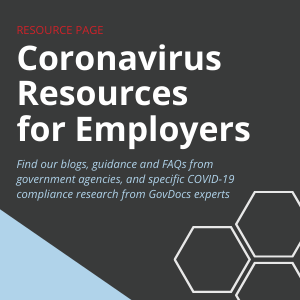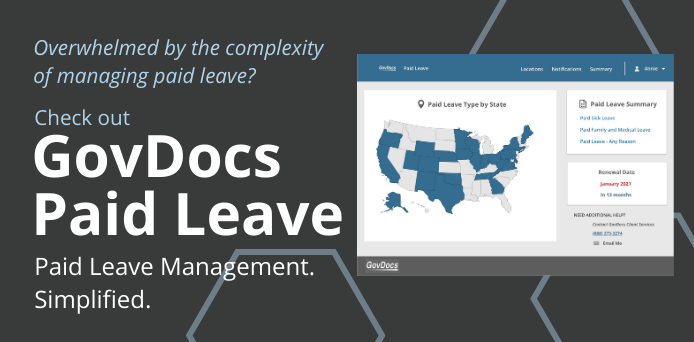EMPLOYMENT LAW NEWS
Updated FFCRA Regulations Revise Employer Responsibilities, Employee Rights
By Kris Janisch
Published Sept. 15, 2020

The DOL clarifies how the paid sick leave and expanded family and medical leave portions of the FFCRA are implemented.
The U.S. Department of Labor (DOL) on Sept. 11 announced revisions that impact how the Families First Coronavirus Response Act (FFCRA) is implemented, impacting both employer responsibilities and employee rights.
In response to a decision from a New York district court, the updated rule looks to clarify both the paid sick leave and expanded family and medical leave portions of the FFCRA.
Generally, the DOL wanted to clear up when paid sick leave is available and the circumstances under which employees must seek approval to use leave.
Find a refresher on the FFCRA on Employment Law News. The measure is set to expire at the end of 2020.
FFCRA Revisions
The revisions are set to take effect Sept. 16. Per the DOL, the clarifications and revisions include:
There Must Be Work to Do
Both paid sick leave and expanded family and medical leave can only be used if the employee would otherwise have work available. If a business is closed, an employee may not use the FFCRA.
Intermittent Leave
Employers must approve intermittent leave under the FFCRA. If a school is using a hybrid model, for instance, the employee can use leave during the days when the school is closed. But if an employee opted to only take certain days or periods of time during a school closure, he or she would require the employer’s approval.
Blog: Back to School and the FFCRA
Definition of Health Care Provider
The definition of “health care provider” was revised to include only employees who meet the definition under the Family and Medical Leave Act or who are employed to provide:
- Diagnostic services
- Preventative services
- Treatment services
- Other services regarding patient care
Documentation
Employees must provide required documentation supporting their need for FFCRA leave to their employers “as soon as practicable,” according to the DOL.
Providing Notice
Lastly, federal officials corrected an inconsistency regarding when employees may be required to provide notice of a need to take expanded family and medical leave to their employers. Again, the revision allows for notice to be given as soon as it’s practical.
Blog: How COVID-19 Will Impact Future Paid Leave Laws
Paid Leave and the FFCRA
With about three and a half months until the FFCRA expires, there continues to be clarification needed in terms of how it’s implemented. The law was crafted quickly in response to the coronavirus pandemic, creating difficulties for employers as the specifics of employee use arose over the past few months.
While the recent revisions help clear up some aspects of the FFCRA, employers may have lingering questions.
The DOL’s Wage and House Division has created a Quick Benefits Tips resource for information:
- About how much leave workers may qualify to use
- Wages employers must pay
This Employment Law News blog is intended for market awareness only, it is not to be used for legal advice or counsel.
Keep Informed
with GovDocs Labor Law News

What is GovDocs?
GovDocs simplifies employment law compliance for large, multi-jurisdiction employers in the U.S. and Canada. The GovDocs software platform integrates three solutions in one convenient place to help you master the employment laws impacting your business. Whether you manage a postings, minimum wage or paid leave program, our products cut through research time, provide proactive insights into the everchanging landscape of employment laws and reduce the risk of noncompliance. The company is headquartered in St. Paul, Minn.
Have fewer than 30 locations?
The GovDocs Poster Store simplifies posting compliance for employers with less than 30 locations across all industries, offering a variety of posting products to meet your labor law compliance needs.



